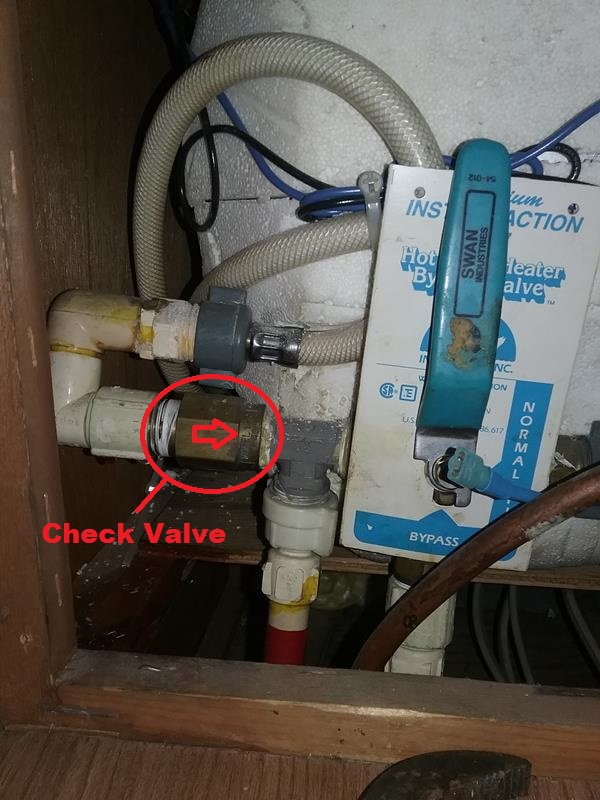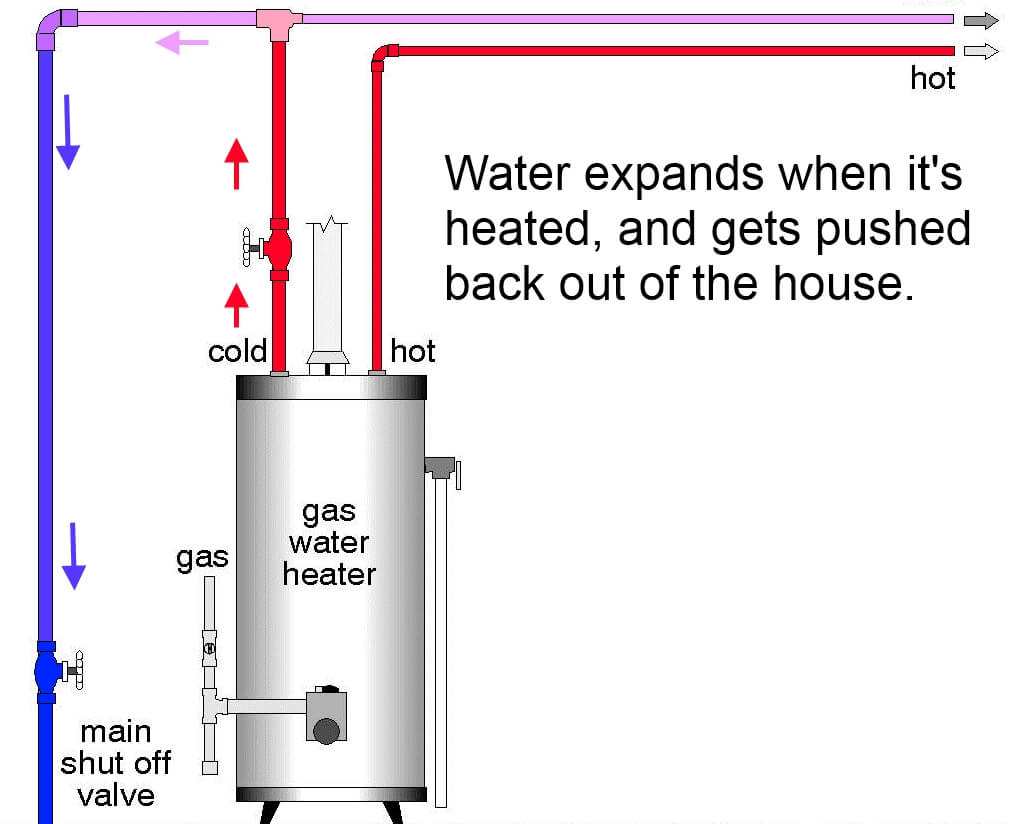The water heater check valve is typically located on the cold water inlet pipe. It prevents backflow into the water supply.
A check valve is an essential component of a water heater system. It ensures that water flows in only one direction, preventing any backflow. This valve is usually found on the cold water inlet pipe, right before it enters the tank.
By stopping the reverse flow, the check valve helps maintain the water heater’s efficiency and longevity. Regular inspection of the check valve can prevent potential issues like contamination or pressure imbalance. Understanding its location and function can aid in better maintenance and troubleshooting of your water heater system. Proper care can extend the life of your water heater and ensure a steady supply of hot water.
Page Contents
Importance Of Check Valves
Check valves ensure water flows in the correct direction, preventing backflow in water heaters. Proper placement enhances efficiency and prolongs the system’s lifespan.
Preventing Backflow
Check valves stop water from flowing the wrong way. They keep water moving in one direction. This prevents backflow and protects your water heater. Backflow can cause damage to the system and contaminate your water. A good check valve ensures your water stays clean and safe.
Ensuring System Efficiency
Check valves help your system run smoothly. They reduce strain on your water heater. This makes the heater last longer and work better. Efficient systems use less energy and save money. Always check your valve to keep your heater in top shape.

Credit: diy.stackexchange.com
Types Of Water Heater Check Valves
Swing check valves allow water to flow in one direction. A disc swings open and closes to block reverse flow. These valves are simple and reliable. They are commonly used in water heaters. Swing check valves are easy to install and maintain.
Spring-loaded check valves use a spring to keep the valve closed. Water pressure opens the valve, allowing flow. These valves prevent backflow effectively. They are more complex than swing check valves. Spring-loaded check valves are suitable for high-pressure systems.
Common Locations For Check Valves
A check valve can often be found near the water heater. This spot is crucial for preventing backflow. It helps in maintaining consistent water pressure. The valve also protects the heater from damage.
Another common location is on the cold water inlet. This placement stops cold water from mixing with hot. It ensures efficient heating. The check valve here also enhances system performance. Proper installation is key for safety.

Credit: www.1999southwind.com
Tools Needed For Installation
Wrenches and pliers are basic tools. They help in tightening and loosening nuts and bolts. Ensure to have different sizes. A good grip is essential. It prevents slipping and injury. Quality tools last longer. They make the job easier.
Thread seal tape prevents leaks. Wrap it around threads. It seals the joints tightly. Use it on all threaded connections. It is also known as plumber’s tape. Easy to use and very effective. Keeps water from leaking out.
Step-by-step Installation Guide
First, turn off the main water supply. Locate the main valve near the water meter. Turn it clockwise to shut off the water. Open all faucets to drain the remaining water. This prevents any water spills during installation. Make sure the water heater is completely drained. Use a hose to connect to the drain valve. Direct the hose to a floor drain or outside.
Locate the inlet pipe on your water heater. This is where cold water enters. Attach the check valve to this pipe. Use Teflon tape to ensure a tight seal. Tighten the valve with a wrench. Make sure it’s snug but not overly tight. Turn the water supply back on slowly. Check for any leaks around the valve. Tighten more if necessary.

Credit: structuretech.com
Maintenance Tips
Check your water heater every month. Look for any leaks or rust. Make sure all parts are working. If you see any damage, fix it soon. Clean the heater to remove dirt. A clean heater works better. Always keep an eye on the temperature setting. It should not be too high.
Valves can wear out over time. Replace worn-out valves to avoid leaks. Turn off the heater before you start. Use the right tools for the job. Always follow the instructions. If you are unsure, ask for help. New valves ensure the heater works well. Keep spare valves at home. This can save time if one breaks.
Troubleshooting Common Issues
Leaks and drips can be a sign of a faulty check valve. Check for moisture around the valve. Tighten the connections if you see any drips. If the leak continues, the valve may need to be replaced. Make sure to turn off the water supply before you do any repairs. This prevents any more water from leaking out.
Reduced water pressure often means the check valve is blocked. Sediment build-up can cause this issue. Clean the valve to remove any debris. If cleaning does not help, consider replacing the valve. Always make sure the valve is installed correctly to avoid pressure issues. A properly installed valve ensures smooth water flow.
Safety Precautions
Locate the water heater check valve near the outlet pipe to ensure proper functioning and safety. Regular inspections help prevent leaks and maintain efficient operation.
Handling Hot Water
Always be careful around hot water. Hot water can cause burns. Turn off the heater before working. Let the water cool down first. Use insulated gloves to protect your hands. Wear long sleeves to cover your arms. Make sure children and pets are away. Keep a first-aid kit nearby. Know where your fire extinguisher is.
Using Protective Gear
Protective gear is very important. Wear safety goggles to shield your eyes. Use rubber boots to prevent slipping. Protective gear keeps you safe. Always check your gear before use. Look for any damage. Replace broken gear right away. Safety first is the best rule.
Frequently Asked Questions
Where Should A Check Valve Be Installed On A Water Heater?
Install a check valve on the cold water supply line near the water heater. This prevents backflow and ensures proper operation.
Do Hot Water Heaters Have A Check Valve?
Yes, hot water heaters often have a check valve. It prevents backflow and ensures water flows in one direction.
Where Is My Water Check Valve?
The water check valve is usually located near your water meter or main shut-off valve. Check the basement or utility area.
Where Is The Water Heater Valve Located?
The water heater valve is usually located near the bottom of the tank. Look for a valve connected to a pipe.
Conclusion
Locating your water heater check valve is crucial for maintenance and efficiency. Proper placement prevents backflow and ensures optimal performance. Regular inspections can save you from costly repairs. Keep your water heater running smoothly by knowing where the check valve is and maintaining it well.
This simple step guarantees long-term reliability and safety.
